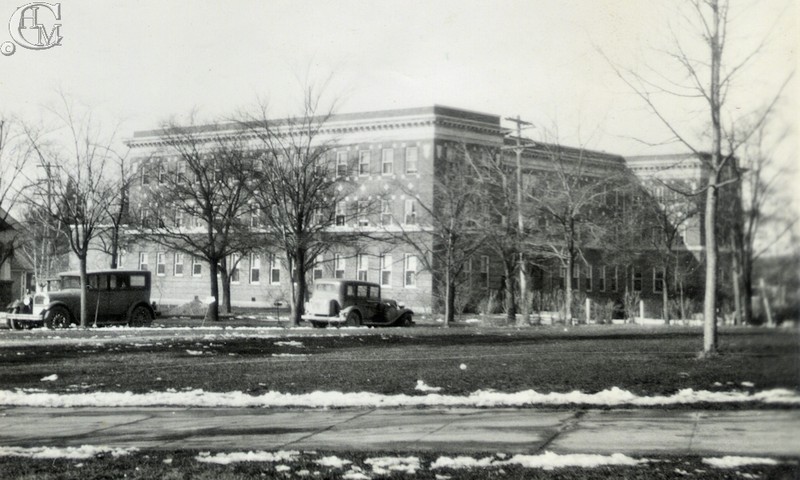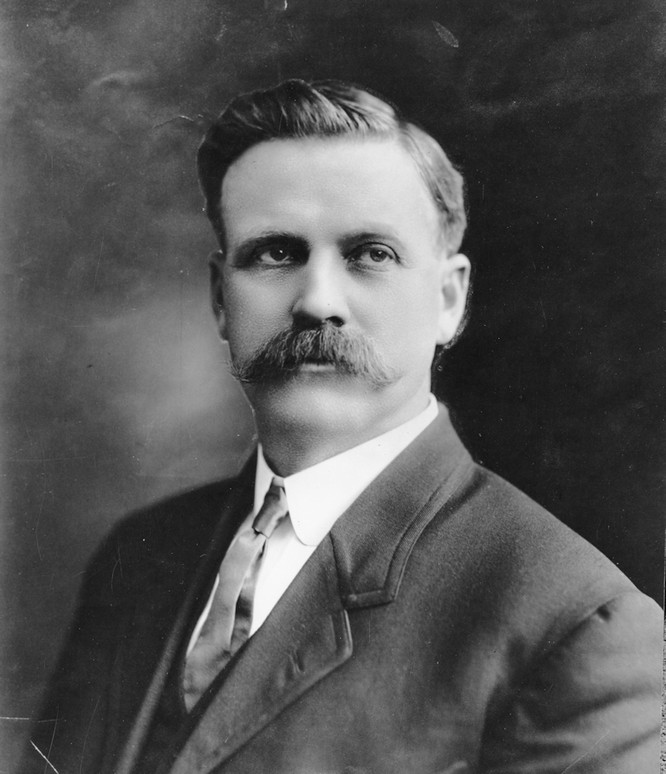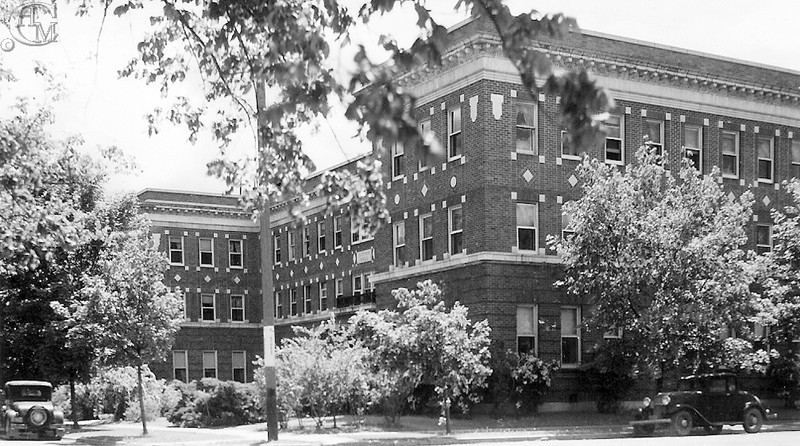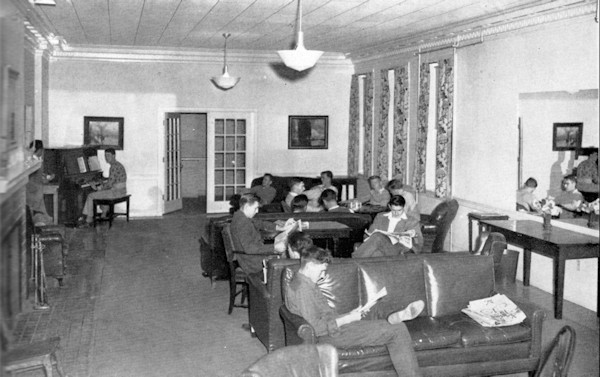1923 Sutton Hall
Introduction
Text-to-speech Audio
Images
Sutton Hall

Senator William J. Sutton

From 7th Street view of Sutton Hall

1947

1959

Sutton Hall lounge 1947

Backstory and Context
Text-to-speech Audio
Women students had
always outnumbered the men in the early days of the Normal School. There were
enough male students by 1899 to field football and basketball teams, but their
numbers meant they could easily find places to live in boarding houses in town.
At the end of the first World War, the number of men enrolling at the school
grew rapidly.
In order to respond
quickly to the need, a group of businessmen and the Board of Trustees came to
an agreement. The businessmen would provide the funds for building a men's
dormitory by issuing private bonds to the school that would be repaid later.
The building was completed in time for students to move in for the Fall quarter
of 1923.
In those days,
dormitories had an adult, on-site, "director" to make sure the rules
for student behavior were followed. In 1930, Joseph and Winona Hungate, along
with their youngest son, moved into a comfortable apartment located next to the
formal lounge in Sutton Hall. Curtained, glass French doors from the lounge
were the entrance to their apartment. While Sutton Hall was a men's dorm, Nona
Hungate often entertained a group of married ladies who had a quilt club. The
big lounge made a perfect place to set up the quilting frames when the male
students were not using it. The ladies held many quilting bees there. Nona was
a mother and a friend to some 1,040 to 1,521 young men during her 13 years at
Sutton Hall.
In the 1970s, Sutton
Hall housed male veterans, many of whom had recently returned from the war in
Vietnam. The building was extensively remodeled into offices in 1978. The
entire interior was dismantled in 1996 leaving no trace of the building's
original function as a dormitory. Another interior remodel took place in 2001.
Sutton Hall now serves as office space. The outside of the building looks very
much like it did back in 1923, with only minor changes.
The building was
dedicated to William J. Sutton, who twice in his career saved the Cheney Normal
School from closure. He served as principal of the college from 1892-1897. In
those days a Principal not only oversaw the school administration, but was also
the head teacher.
Sutton was born in
Michigan in 1865, and graduated from the Fenton, Michigan Normal School in
1886. The next year he moved to
Washington. Being a man of some charisma
as well as ability, he was soon elected principal of the Cheney Public
School. Sutton was chosen as Vice
Principal of the newly established Cheney State Normal School in 1890, and two
years later he was elected Principal.
The original
building burned in 1891, but Sutton was able to prevent the Governor's efforts
to close the school. By the time he resigned from the Normal School in February
1897, the institution had a new building, funded by an appropriation from the
legislature. Soon after resigning,
Sutton married Nellie G. Hutchinson, who had been principal of the Cheney
Normal Training School, and he turned his focus on farming and breeding horses. He also served as president of the Security
National Bank of Cheney.
William J. Sutton
returned to the political arena when he was elected State Senator in 1912,
shortly after the Cheney State Normal School building had once again burned. In
a singular effort against the odds, Senator Sutton pushed through passage of a
$300,000 appropriation, despite Governor Ernest Lister's veto. That money built
the Administration Building, later christened Showalter Hall, which is still
the most prominent building on the campus. Sutton went on to serve a total of
four terms in the Washington State Senate, during which time he chaired several
educational commissions. He was also instrumental in saving the State College (WSU) in Pullman
from being reduced to the status of a trade school. He retired from politics in
1929, and oversaw the farming operations on his land near Cheney, as well as
staying involved in local civic improvement projects until his death in
December 1940.
The Sutton Hall
building is 3-stories that looks like the letter H, made of brick with a
concrete foundation and a flat roof. It is 133 feet long with two 111 foot
wings. Originally, there were sleeping porches at the rear of the building. The
only remaining evidence of them is an odd interior brick wall in the rear part
of the building that once enclosed those sleeping porches.
Cite This Entry
JM Mamanakis on behalf of Cheney Historical Museum and Joan Mamanakis. "1923 Sutton Hall." Clio: Your Guide to History. April 19, 2019. Accessed April 1, 2025. https://theclio.com/entry/26527

